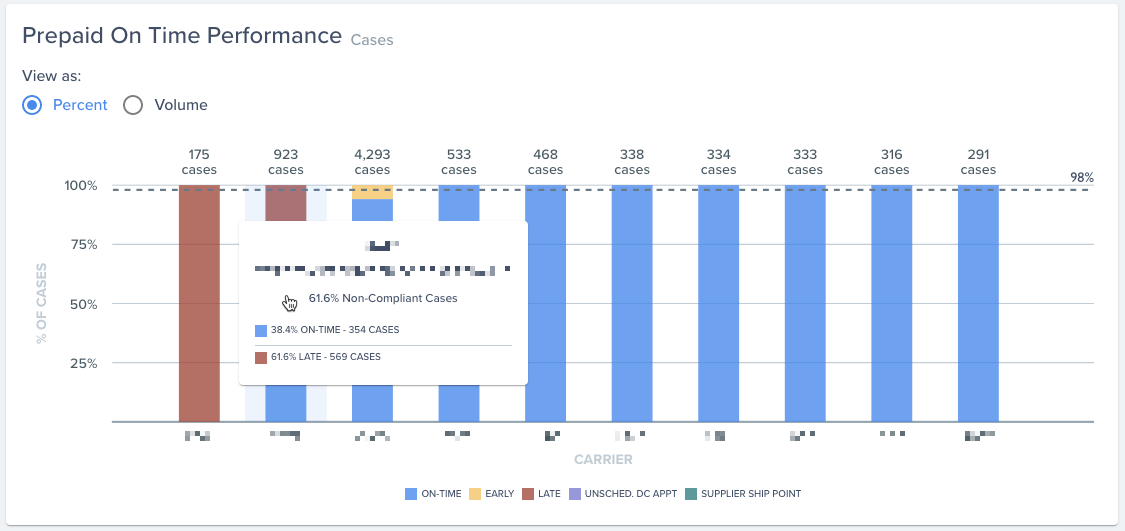Understanding Freight Consolidation
Learn about:
- What consolidated freight is
- The pros and cons of freight consolidation
- Off-shore versus on-site consolidation
Freight consolidation is a method of shipping that is ideal for small retail suppliers. This type of transportation increases time and money by blending limited loads for low-cost, efficient shipping. Freight from different sources with a common destination reaches a transit point and then moves on to the expected distribution center or retailer.
Freight consolidation is all about the operation of integrating several parcels or incomplete pallets jointly into a single container going to a shared route point before reaching their ultimate destination. Businesses can then utilize a smaller number of loads and get shipments to their destinations with increased efficiency and lower prices.
What is consolidated freight?
Freight consolidation is the process of taking many dispersed shipments and combining them into a single freight container. In this way, more than one supplier can supply these collective shipments. Also, they can travel by flight, waterway, or land route together.
No matter which type of freight the supplier uses, consolidated shipments move in the same direction to a defined waypoint. This destination is where the transportation company divides the combined load and ships it to its final destination, such as a retailer or distribution center.
Small businesses using this logistics approach can make better freight decisions and avoid spending a higher amount for partial loads. Suppliers can also circumvent long queues waiting to get a fully loaded shipping container ready. Freight consolidation can occur no matter how many packages are in a shipment.
Pros of freight consolidation
Freight consolidation has the following advantages:
- Inexpensive shipping charges: With combined freight, small suppliers typically pay a reduced bulk rate for shipping. Consolidation is less expensive than Less-Than-Truckload shipping as the logistics company does not have to wait to fill a container.
- Better relationships with carriers: Redirecting freight enhances carriers’ and suppliers’ relationships by creating long-term collaborations and lower costs for all parties.
- Time savings and better productivity: Consolidation saves time and increases overall productivity by reducing how long it takes for a container to reach its destination. Consolidation also decreases the standby time for shipments.
- Fewer kinks in the supply chain: Selecting a dependable consolidator reduces potential issues in shipping over the supply chain by ensuring that the cargo reaches its destination on time.
- Protection against damage: Consolidating freight means more protection against potential damages to the order. Reducing the transport of cargo from one truck to another means that there is less opportunity for mishandling.
- Low ecological consequences: Lowering the number of individual loads equates to fewer truck emissions, meaning a more green transportation system. Fewer carriers also mean less fuel consumption.
Cons of freight consolidation
However, there are some drawbacks of freight consolidation to consider:
- Extra time: Consolidating (and unconsolidating) freight takes time. These activities cause extra work for logistics companies, and suppliers must add these delays into lead time calculations.
- Does not fit every shipment category: Products that are delicate, consumable, or volatile do not fit the bill of consolidated freight. Breakable and short shelf-life items that are prone to damage may result in loss. Hazardous materials can lead to lethal accidents if not isolated from other cargo.
- Planning the supply chain: Suppliers must carefully research and vet consolidators to ensure they are compliant with retailers’ receiving requirements, such as OTIF or ORAD. Additionally, suppliers must create a plan of action when hiccups occur.
Off-shore vs. on-site freight consolidation
Consolidating shipments occur in two formats: off-shore freight consolidation and on-site freight consolidation.
Off-shore freight consolidation
Off-shore freight consolidation involves putting together often uncategorized shipments in large quantities bound for different sites. Consolidators classify and aggregate these shipments with others going to the same destination.
Off-shore consolidation is best for suppliers with less knowledge of the kinds of orders they expect to receive. This type of consolidation increases flexibility with deadlines and lead times.
However, additional expenditure and management of the shipment are necessary to ensure the freight arrives at the consolidator’s facility.
On-site freight consolidation
On-site freight consolidation involves putting together shipments at the items’ origin, such as the factory or source, instead of the warehouse. This method decreases the number of shipping points an order must go through, thus reducing the cost and increasing its efficiency.
On-site consolidation is best for consumables and items with expiration dates, as the product moves faster. This method is also best for suppliers with visibility into their supply chain, as they can see when consolidation must occur.
However, this system may require more staging space inside the facility and an increased workforce at the point of production.
Conclusion
Even though freight consolidation may not be the right option for every company, it has excellent benefits. Freight consolidation is beneficial to smaller suppliers or suppliers with smaller shipments to make the process cheaper and more efficient.
Most businesses rely on freight consolidation to regulate their shipping process, quicken the product’s delivery to customers, and support the establishment and maintenance of customer relationships.
On Time and In Full
SupplyPike’s OTIF Radar app can help you better understand your supply chain and how to be compliant with Walmart’s stringent On Time In Full requirements. WIth OTIF Radar, you can see which logistics company is working for you – and which is not.
OTIF Radar – Carrier Prepaid Performance
Related Resources
Written by The SupplyPike Team
About The SupplyPike Team
SupplyPike builds software to help retail suppliers fight deductions, meet compliance standards, and dig down to root cause issues in their supply chain.
Read More
About

SupplyPike helps you fight deductions, increase in-stocks, and meet OTIF goals in the built-for-you platform, powered by machine learning.
View SupplyPike's Website
